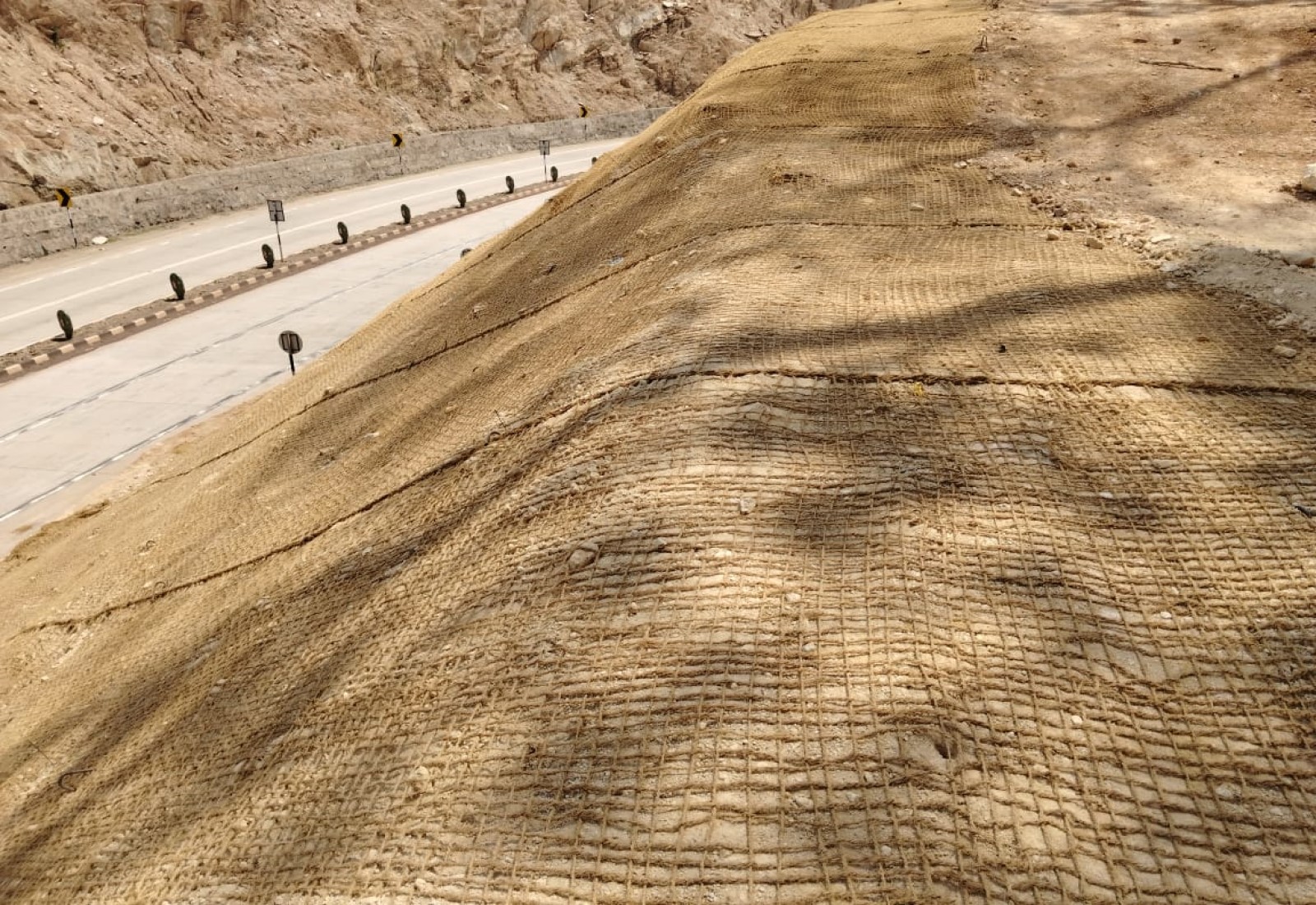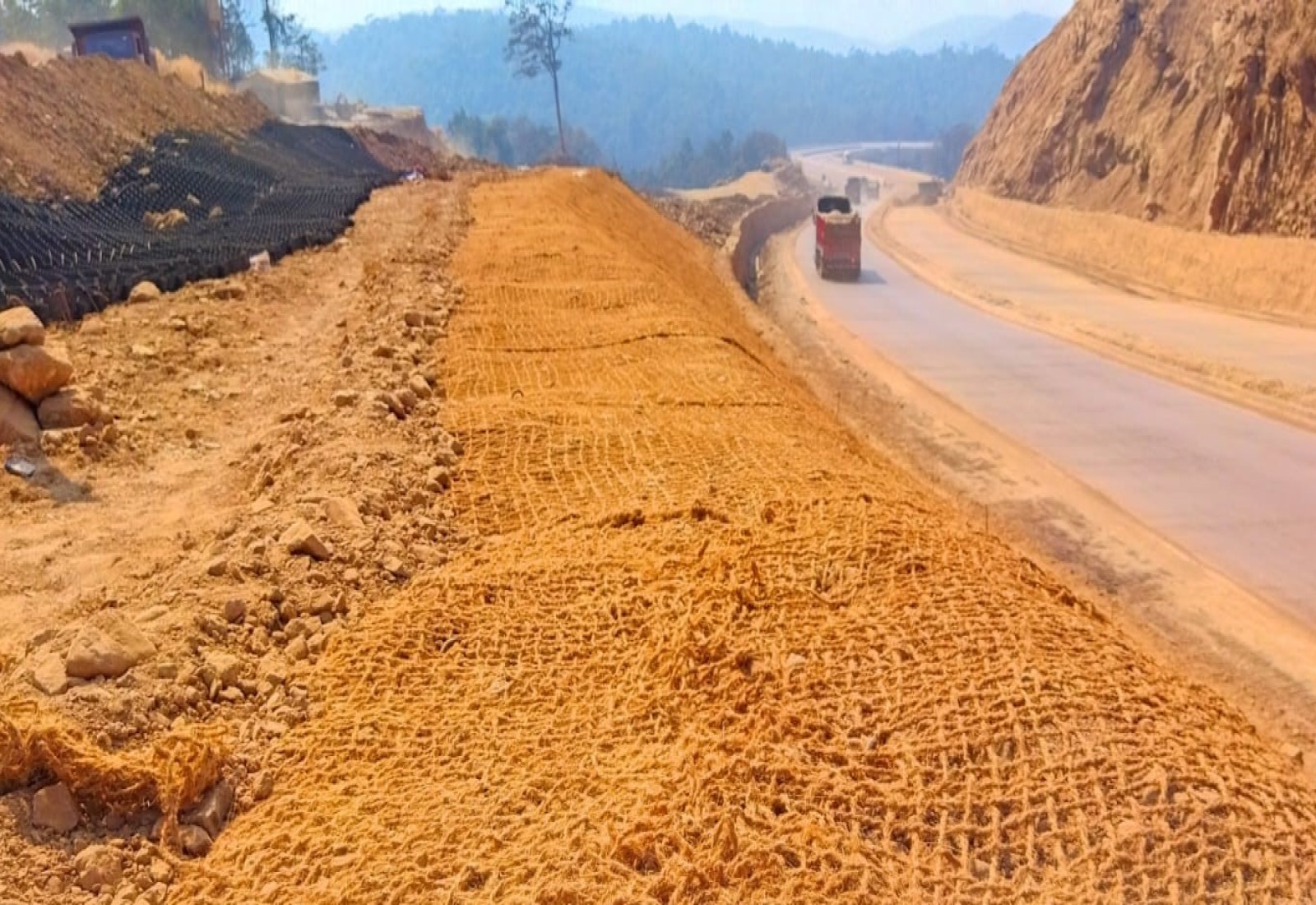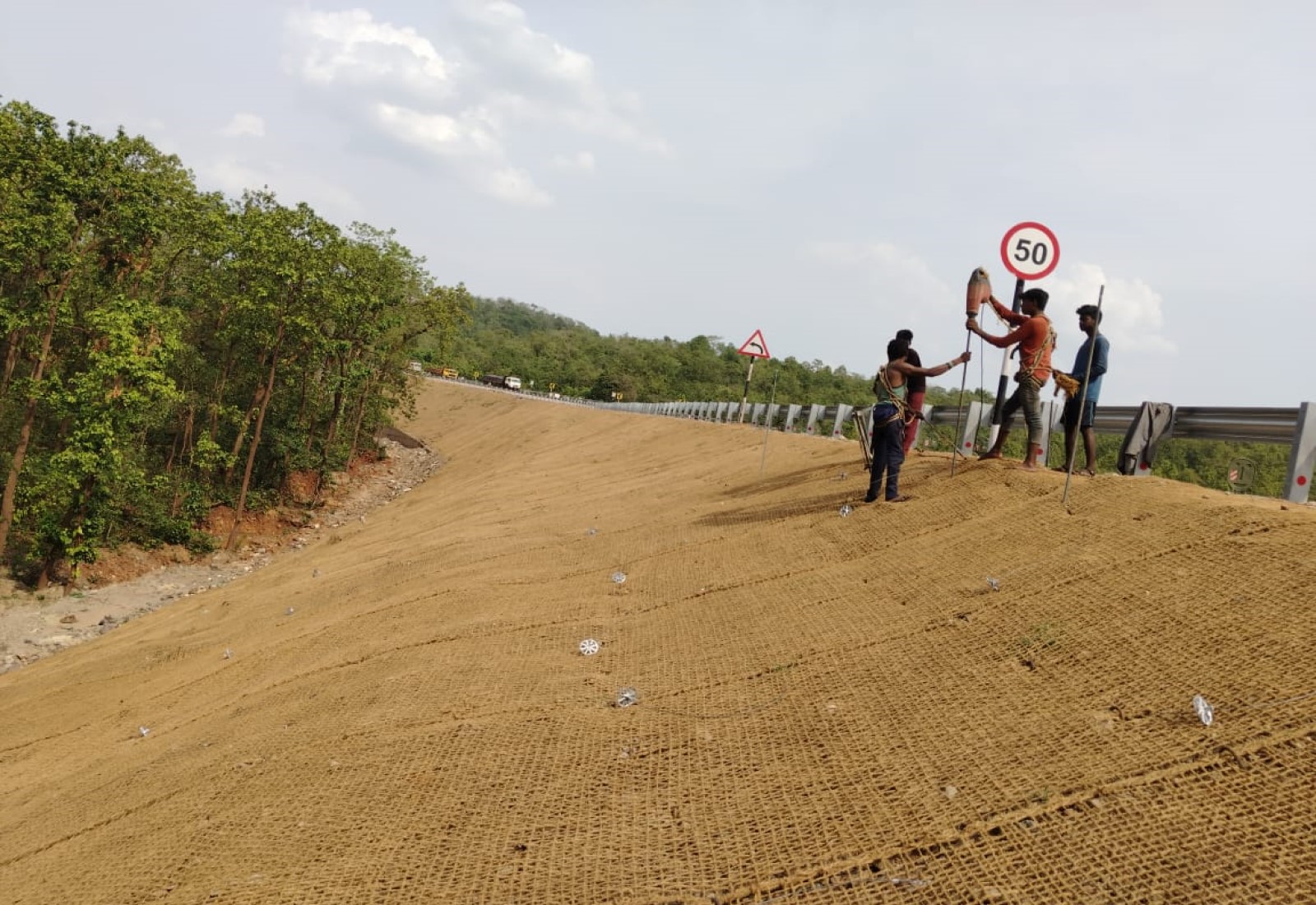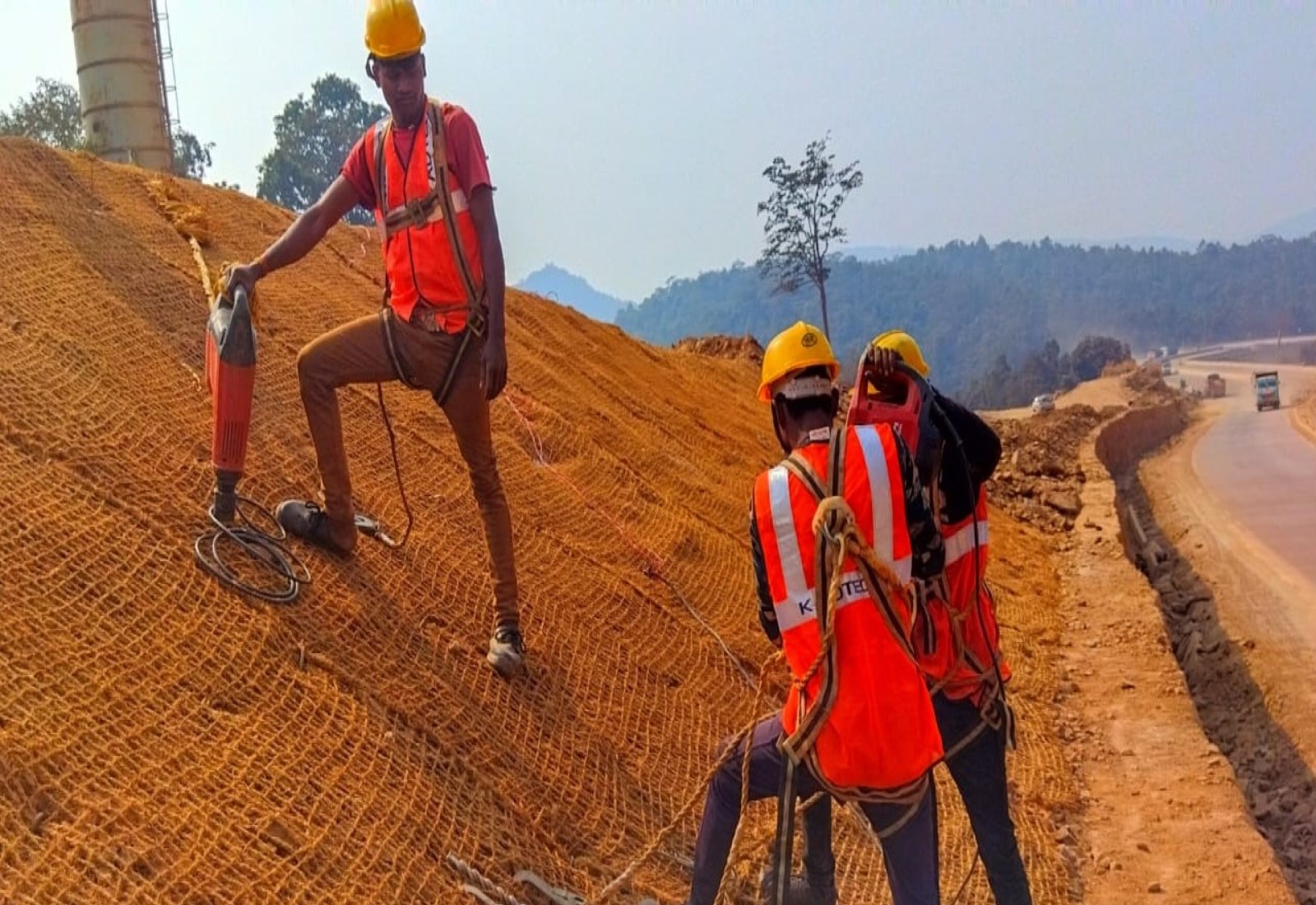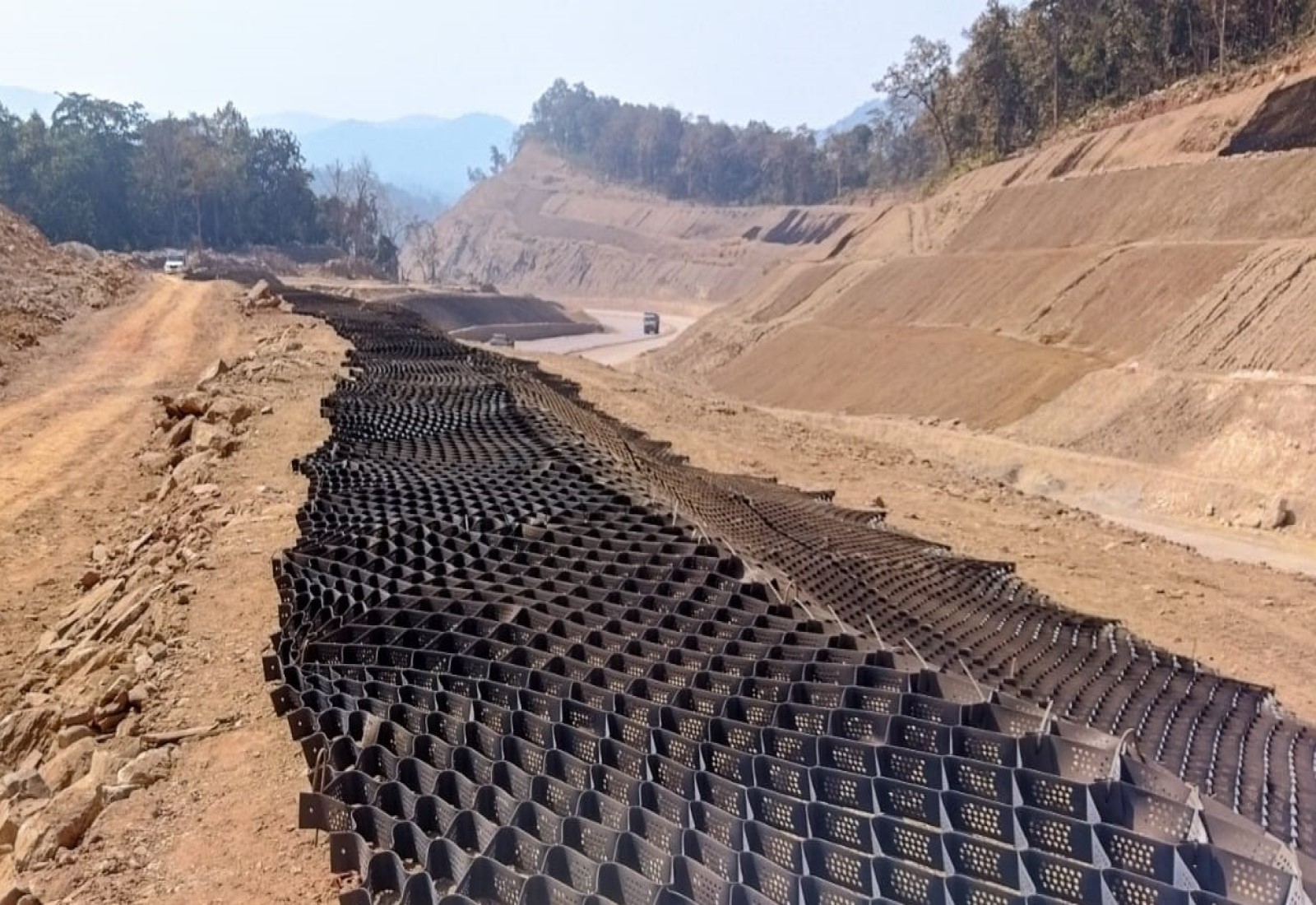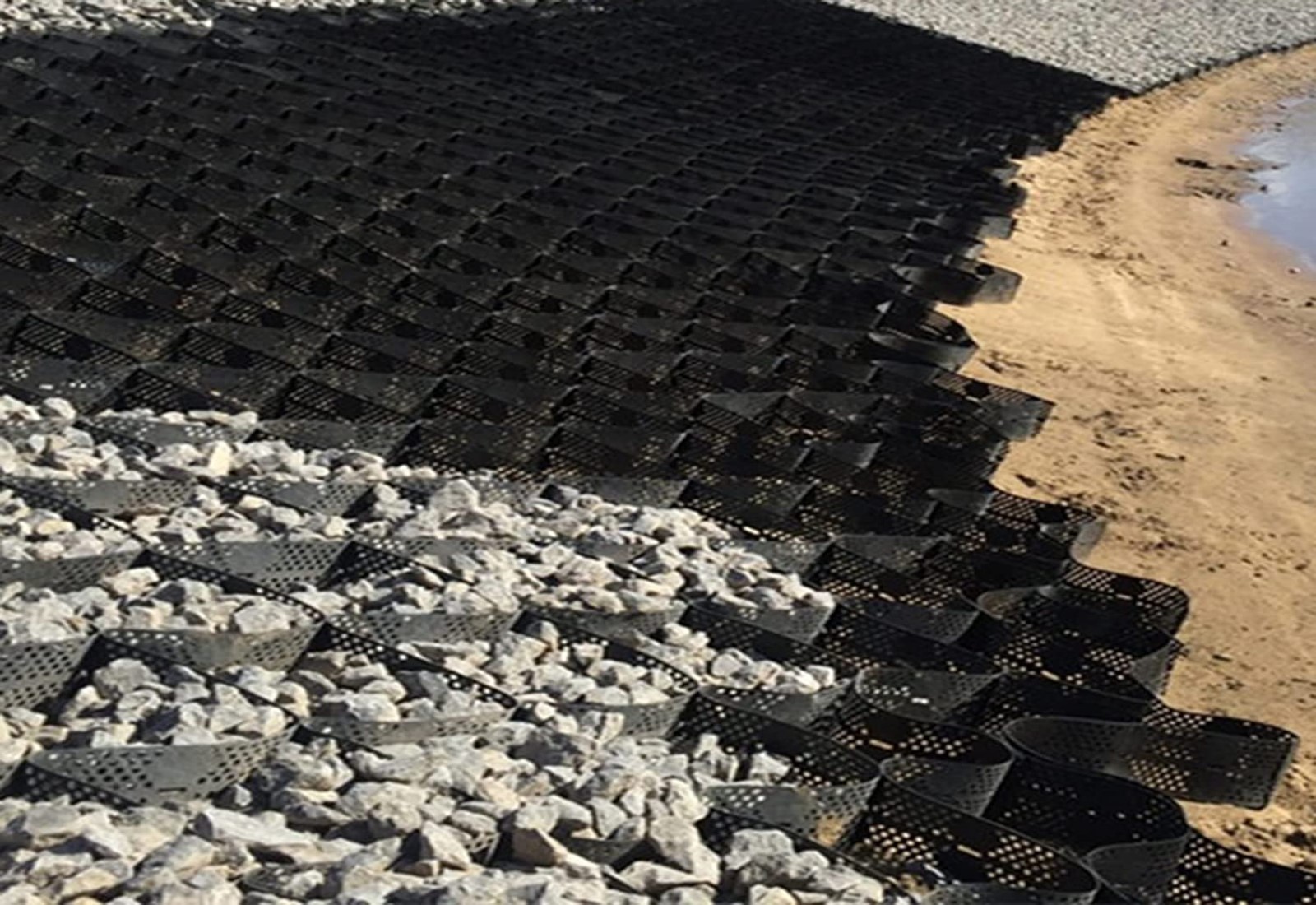Reinforced Steep Slope is normally defined as compacted fill embankment that incorporates the use of horizontally placed Geosynthetics reinforcement to enhance the stability of the structure. The Slopes with a face angle up to 80° can be stabilised by incorporating layers of Geosynthetics layers (Geogrid/Geotextile) at a suitable vertical spacing. The Geosynthetic layers are laid horizontally back from the slope face in layers. The Tensile strength, vertical spacing and Reinforcement length of the Geosynthetics material depend upon the slope angle, properties of fill material properties and any surcharge loading over the slope. Soft structural facings are provided if the slope angle is greater than 800. Sometimes, an erosion control is provided on the slope surface, and seeding or planting is done to establish vegetation.
- Slope Protection Work with Erosion Control Mat
Slope Protection work with erosion control mat is a cost-effective solution to prevent soil erosion due to heavy rains. The roots system can reduce surface runoff in which it is important to minimize erosion. All developments in hilly areas often require cutting and filling of slopes thus disturbs the topsoil on that area, this leaves it exposed to erosion. Construction of slopes therefore plays a very large role during the service. Bad slopes construction will require a lot of maintenance since they are very easily affected by the action of water leading to endless problems from erosions, settlements, seepages and slips to landslides. Many methods have been introduced to control soil erosion.
One of the common methods is using erosion control mat such as geotextile, turf reinforcement mats etc. This type of mat is made from biodegradable fibre such as coconut fibre, straw, wood excelsior and agricultural fibres mats. Its durable mesh provides protection and stability to hillsides. Erosion control mats can be effective in minimizing the erosive effect of rainfall when used to cover bare or newly planted soil. Besides to control soil erosion, they also effectively to protect new vegetation and reduces the potential for introducing sediment into storm water run-off. Plus, it assists with seed germination, protecting them from runoff allowing them to take root.
Erosion Control Mat may be made of three dimensional Geosynthetic product also.
- Slope Stabilization Work with Soil Nail & Shotcrete
Soil nailing is an economic technique used to stabilize existing unstable natural or man-made (fill) soil slopes as a construction technique that allows the safe over-steepening of new or existing soil slopes by embedding steel bars called soil nails into them at some inclination to the soil slopes. This technique uses top to bottom construction sequence and thus acts as a boon to areas where ground is excavated in lifts of limited heights. This soil reinforcement process uses steel tendons which are drilled and grouted into the soil to create a composite mass like a gravity wall generally known as shotcrete. It is called Soil Nail, because it's like having a nail being hammered into the soil, where the nails, are the steel bars.
The technique involves the insertion of relatively slender reinforcing elements into the slope – often general-purpose reinforcing bars (rebar) although proprietary solid or hollow-system bars are also available. Solid bars are usually installed into pre-drilled holes and then grouted into place using a separate grout line, whereas hollow bars may be drilled and grouted simultaneously using a sacrificial drill bit and by pumping grout down the hollow bar as drilling progresses.
